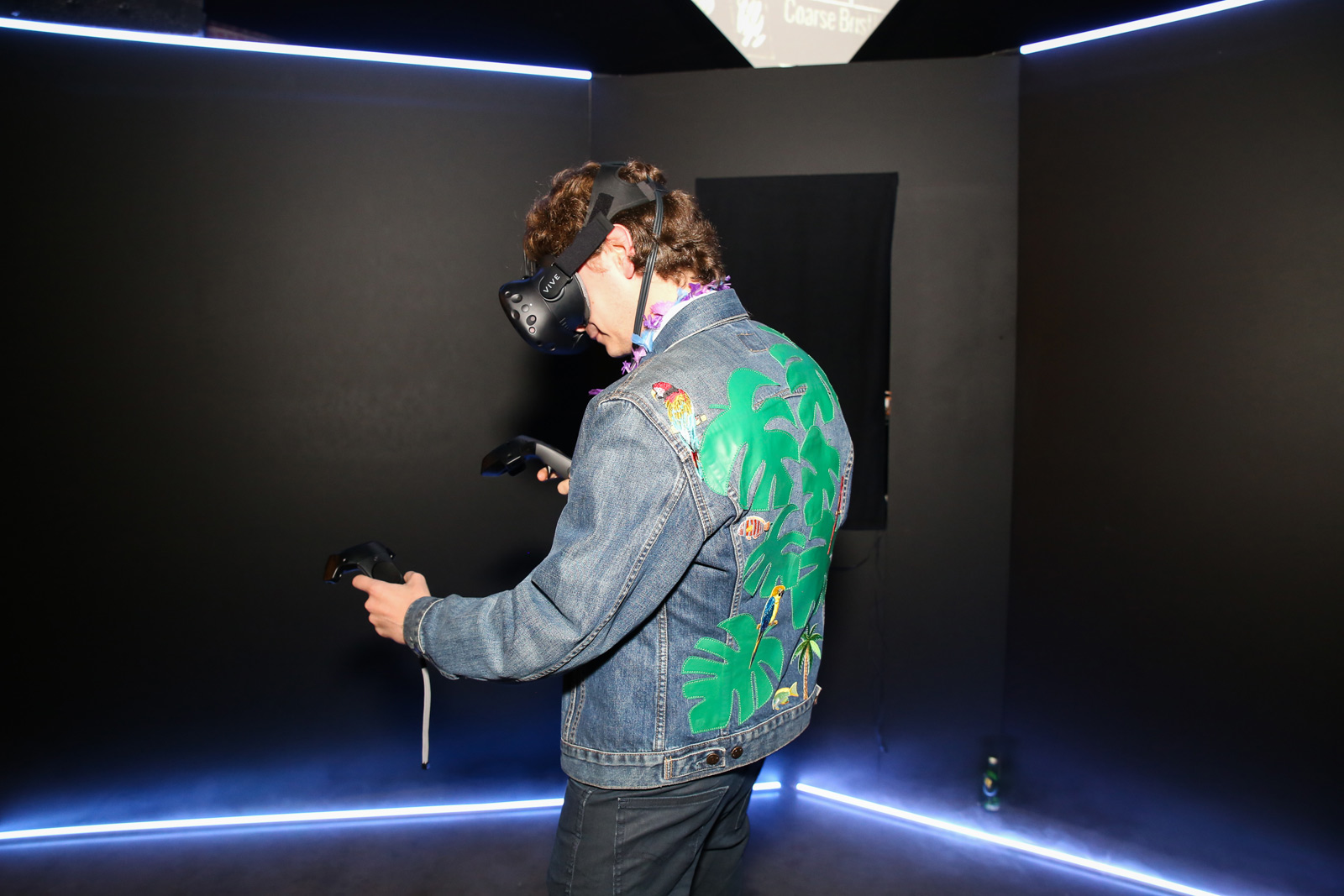Hands-On With Google Tilt Brush At Pioneer Works
Testing the VR art tool at Dustin Yellin’s annual Village Fête

One doesn’t need to be a painter (or even have that much hand-eye coordination) to enjoy the wonders of Google’s new Tilt Brush virtual reality app. Working in conjunction with the HTC Vive VR set (powered by the Steam VR platform), Tilt Brush allows users to paint with color, light and more in three dimensions. In many ways, the experience is more like sculpting than painting, in that shapes and forms manifest with each hand movement. Regardless, it’s an art-making experience like no other and, from ease of use to the comfortability (and privacy) of the immersive world, anyone can enter the digital and whip up works with whimsy and imagination. It may also prove to be an invaluable tool for working artists and designers.

At Dustin Yellin’s art research and experimentation center Pioneer Works in Red Hook, Brooklyn, we got hands-on with the Tilt Brush. Yellin (along with Jeff Koons and other artists) was given the Tilt Brush in advance of its recent release. Guests of the organization’s annual Village Fête (which we attended on behalf of Ruinart Champagne) were able to demo the app in three lab set-ups at Pioneer Works. Not only is it very fun, it’s easy. After slipping on the headset and grabbing two hand-held controllers we access the tools (from color palette to visual effects like snow, smoke and stars) with the left-hand controller. With our right hand, we began painting at the air and sky. Initially it’s enticing to create something two-dimensional, but we quickly learned that it’s just as easy to develop circles into spheres and accent features from all angles.
Much like sculpting, users can move around their creation; tweaking and tailoring elements as you please. The interface isn’t an art teacher so much as an art enabler—making the experience a full-on exploration. Also worth noting is that working on large-scale pieces is substantially less expensive than if one had to buy the tangible materials in the real world. Works can be larger than life here, at no extra cost. When the piece is completed, it can be viewed as a 3D painting within the VR set, or exported into a GIF-like form. It can also be viewed in two dimensions on connected screens. We’ve spent a substantial amount of time exploring virtual reality—from a technological and storytelling standpoint. It’s hard not to realize the applications of Tilt Brush outside of art, with future uses potentially expanding into 3D modeling for engineering and even medicine, areas that require a grasp of depth. Right now, though, this is a consumer-facing product that’s a next natural step in artistic development.
Tilt Brush is available now, for free, with the purchase of an HTC Vive, presently retailing for $800.
Images courtesy of BFA












